|
|
ADDRESS DURING THE PRESIDENT?S FLEET REVIEW OF INDIAN AIR FORCE, CHANDIGARH
07-03-2007 : Chandigarh
Indian Air Force in 2025
"We fly and fly in formation to defend the nation"
I am indeed very happy to be with the Air Warriors of the Indian Air Force on this occasion of the Fleet Review coinciding with the Platinum Jubilee of the Indian Air Force. I greet the Officers, Master Warrant Officers, Warrant Officers, other ranks, technicians and non-combatants of the Indian Air Force. Also I greet all the dignitaries assembled here.
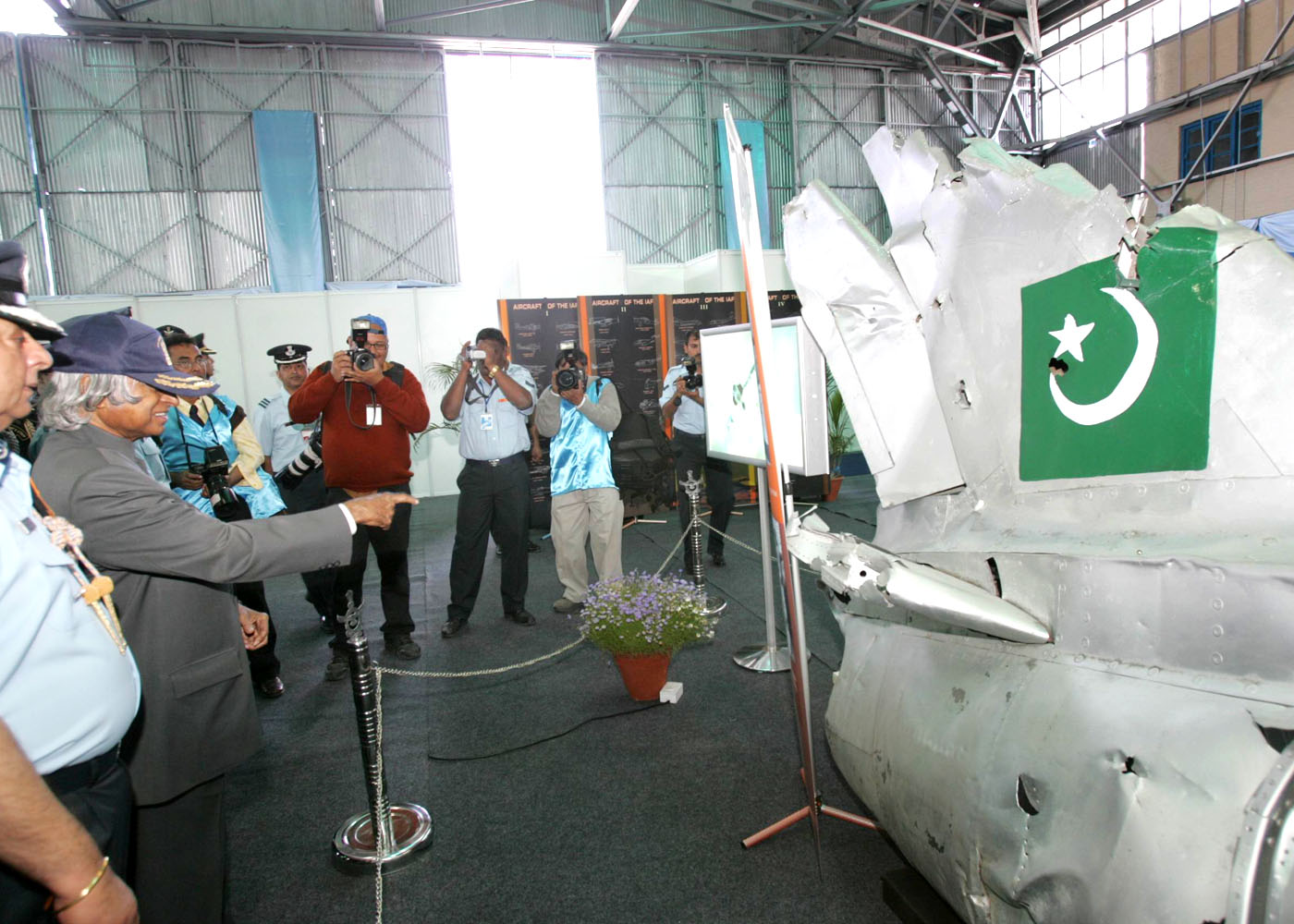
The growth of the Indian Air Force has indeed been very impressive all along and more so in the last two decades. Air Force has started acquiring the unique capabilities by including several technologically advanced state-of-the-art platforms, sensors and weapon systems. Added to this is the human capacity of world class that they have built over the years. Indian Air Force has seen many transformations - From Aircraft powered by propeller driven IC engines to high endurance, high performance Jet engines; from sub-sonic to super-sonic fighter jets; from manual controls to fly-by-wire; these are only a few samples of many of the technological advances that have found their way into the operational domain of the Indian Air Force I came into contact with the Air Force as early as 1954. I myself have witnessed these happy transformations. My congratulations to all of you.
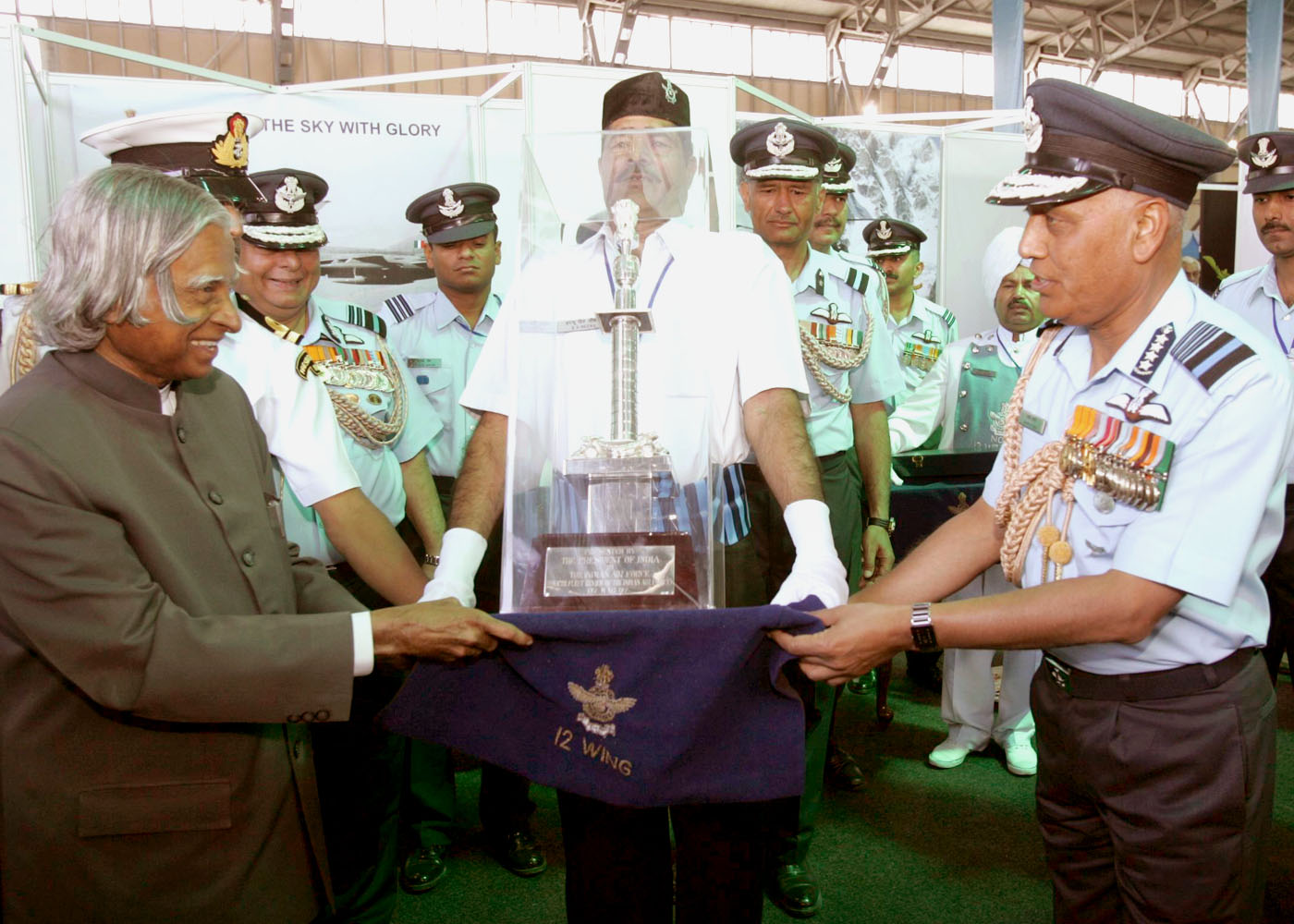
Now, the Air Force has the best of fighter aircraft in the world with multi-role capability, with the ability to carry unique payloads. Above all, you have the capacity to have long-range deep-penetration missions. Air Force also has recognized the importance of the force multiplier in their flying machines with the addition of long-range air-borne radar capabilities, on board computers, MFD (Multi-function displays), various types of missile systems and electronic warfare systems. The stealth technology in the form of design for stealth, configuration modifications and stealth coating have been well understood and have been successfully applied for reducing the radar cross section. Above all, when I see you at this 4th fleet review of the Indian Air Force, I recognize you are the air warriors behind these powerful flying machines. I congratulate the Indian Air Force for all its achievements during war and peace. While I am with you, I would like to share one unique experience that I had on the 8th June 2006.


Experience in Sukhoi-30 MKI
On 8th June 2006, I flew in a Sukhoi-30 fighter plane to make a sortie. The previous night, Wing Commander Ajay Rathore briefed me on how to fly. Though I was an aeronautical engineer myself fully familiar with the theory of flight and the design of the aerospace vehicles, I listened to Wing Commander Ajay Rathore with intent and seriousness, because I always considered myself to be a student of flying. My friend, Wing Commander Ajay taught me how to pilot the plane as well as handle warfare control successfully of Su-30. It was a dream for me since 1958, when I became an engineer, to fly a fighter aircraft.
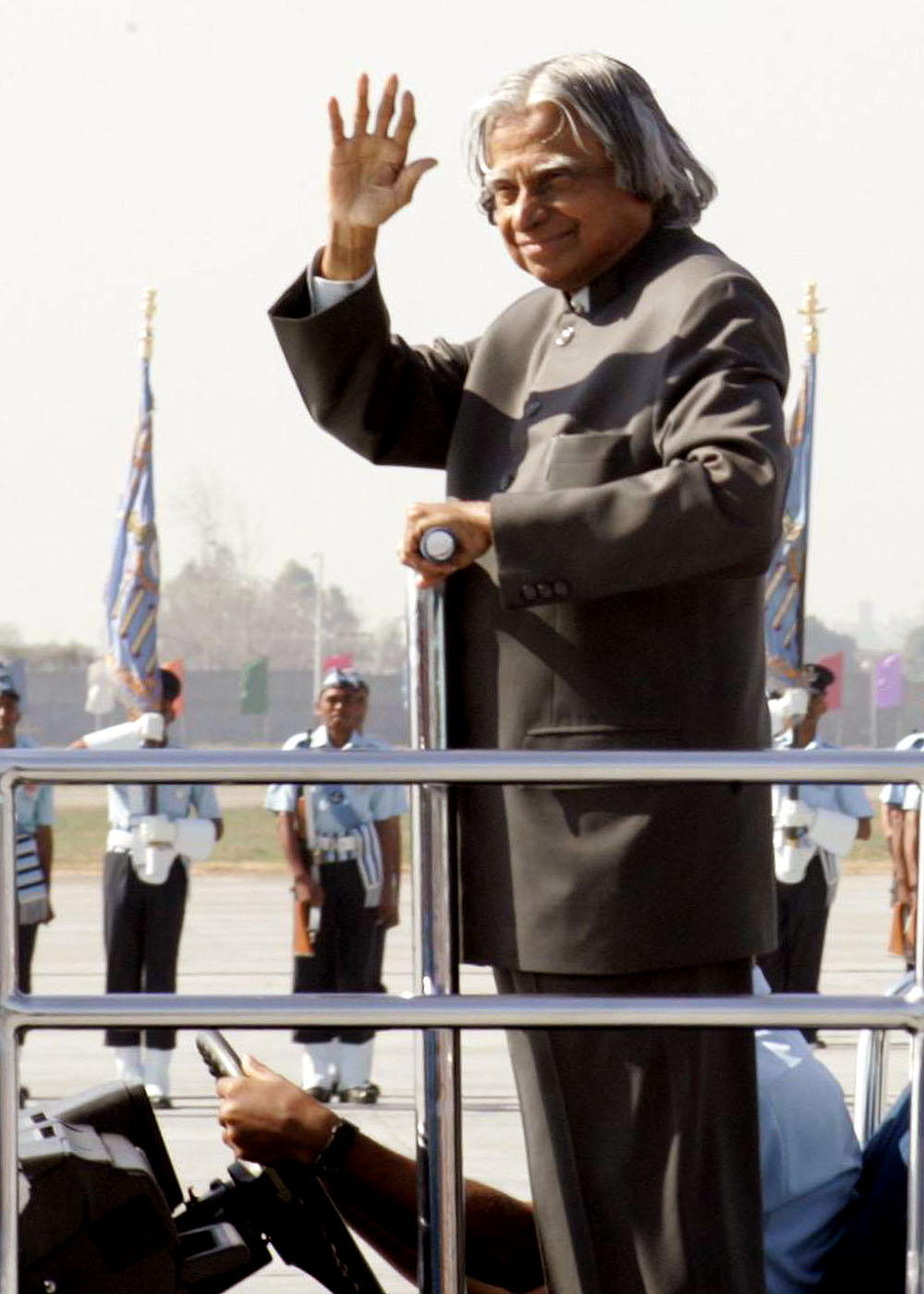
After our strapping on, Sukhoi-30 took off and soared to a height of 25,000 feet flying at a speed of over 1200 kms per hour. Wing Commander Rathore allowed me to bank the Sukhoi to the left and then to the right. I experienced 2.5g of course with a g-suite. During the sortie I tried to understand the various subsystems of the aircraft developed by Indian scientists, which have been integrated with Sukhoi-30 MKI. I was very happy to see the indigenously built mission computers, radar warning receivers, IFF and display processors in the aircraft. During the sortie, I was shown how to locate the target in the air and on the ground with the help of synthetic aperture radar. I experienced the banking to the right and to the left before landing. During this experience, I realized why the take off and landing are the most interesting phases of the flight for every pilot. The flight lasted for over 36 minutes. I felt the fulfillment of a great aim and long cherished dream of my life. Above all, I realized how the dedication, the precision and the professionalism of our air warriors are defending the nations? airspace and land. Behind every successful flying machine, indeed there is an Indian Air Warrior.
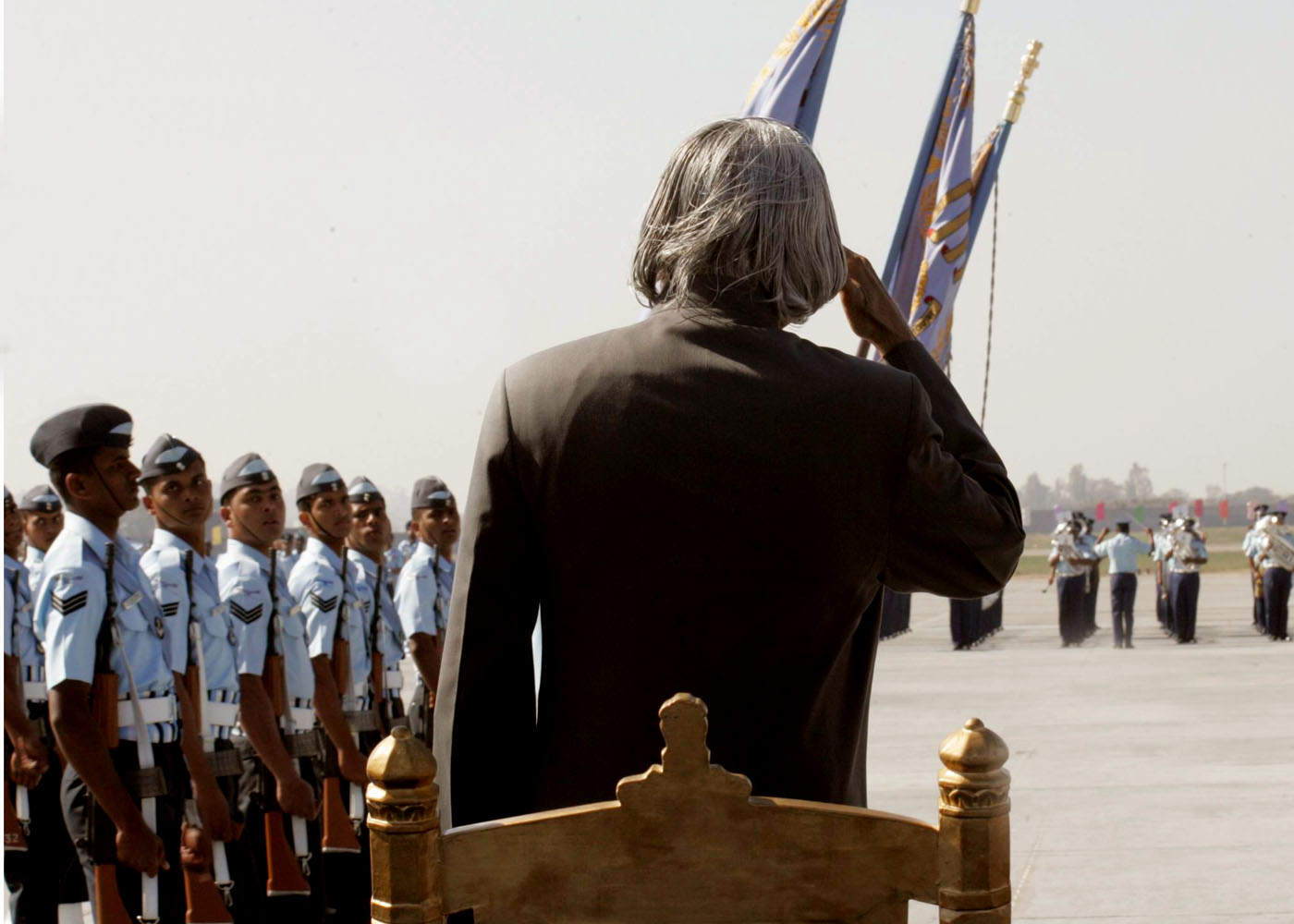

Force multipliers
Su-30 MKI fighter in Indian Air Force with the modern weaponry and electronic warfare systems will bring forth new dimensions in the modern air warfare. With mid air refueling capability, the precision strike power and the range of operation has been substantially increased. Sukhoi 30 MKI, has benefited from many of the technologies and instruments developed by India, Russia, France, South Africa and Israel. I am sure, very soon this aircraft will have BrahMos missile integrated with it. This will definitely provide force multiplication for our Air Force. For enhancing air defense capability there is a need to induct Akash like system at an early date. The induction of Airborne Warning and Control Systems would enhance your surveillance capabilities manifold. Up-to-date intelligence in the battlefield is an important input in our strategic planning. Today, the application of semi-autonomous palm sized aircraft for surveillance is a reality. An integrated imaging system using multiple ground based sensors and satellite based sensors, as well as an array of flying miniature palmtops would soon be able to send through a very robust communication network, the battlefield scenario to the fighter squadron in real time. The computing power in these sensors would be integrated in the sensor itself, making the sensor a smart one, which would communicate efficiently; epitomizing the convergence of sensing, computing and communication. The aeronautical community has used even biological vehicles fitted with cameras and trained for sustained long endurance flights for surveillance. These surveillance systems have not yet reached the levels of perfection to be operationalized and this opens up an opportunity to explore.
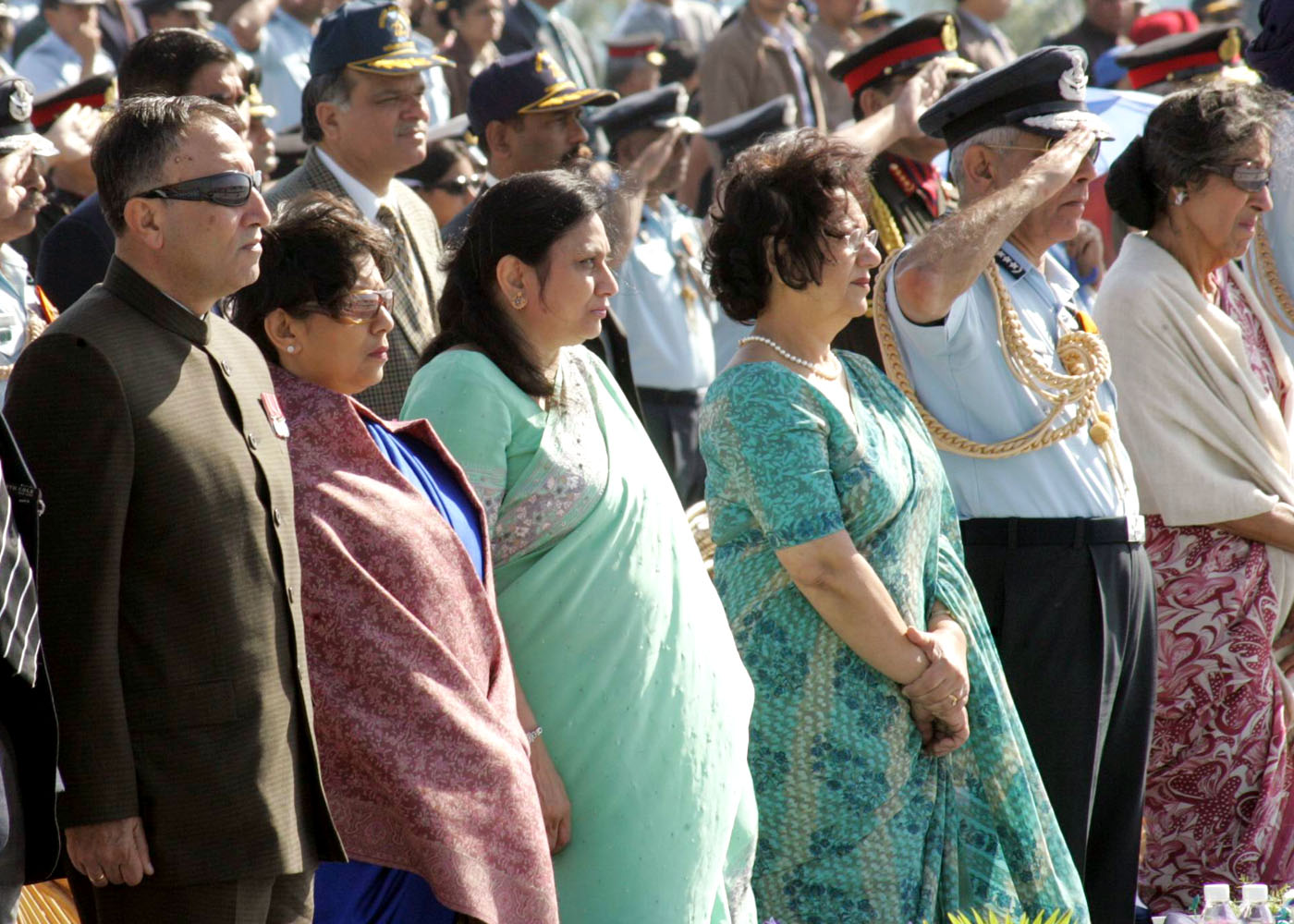

Network Centric Warfare and Aerospace command
Future war will have more intelligent and autonomous platforms and weapons integrating multiple sensors such as, satellites and unmanned vehicles for Command, Control, Communication, Computer, Information, Intelligence, Surveillance and Reconnaissance (C4 I2 SR) for optimum utilization of assets and enable precision strike capability with speed. The war will integrate Army, Navy and Air Force assets together with force multipliers for inflicting maximum damage to the assets of the adversaries in minimum time through seamless integration of joint operations. This has come out very clearly during the Kargil operations. The Indian Air Force played a key role in Kargil operations. Many of you would have participated in that operation. The Military communication, reconnaissance and Global Navigation System Satellites with high accuracy updates will become central in the Networked Warfare, integrating with air, sea, sub-sea and land operations. I visualize unmanned supersonic combat air vehicle, air launched hypersonic cruise missiles, and submarine launched ballistic missiles, anti-ballistic missiles integrated with the long-range radars providing a high technology combat scenario. High power Lasers and microwave will dominate the war scenario. While the technologies advance our capability to defend, these advances are nevertheless deterrents to any misadventures by our adversaries.
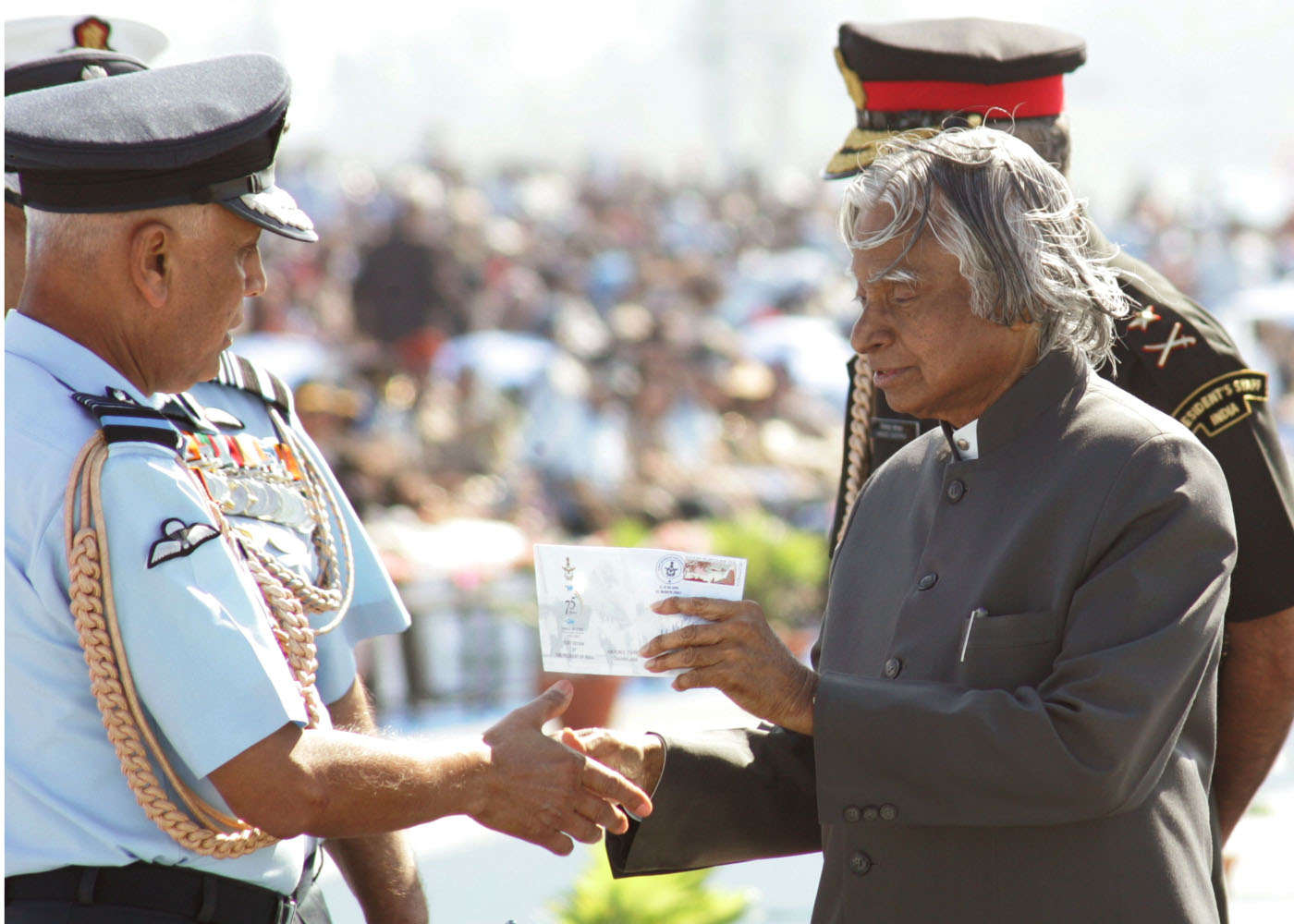

Operational readiness
When I see you all in your uniform, you look very smart, you look combat ready and you look confident to face any situation and win. I am fully aware of the difficult environment in which you all carry out your operations. My Government is committed to continuously modernizing the equipment and adding force multipliers to enhance the operational performance and improving flight safety. Now, I would like to present my visualization of the Air Force of 2025.
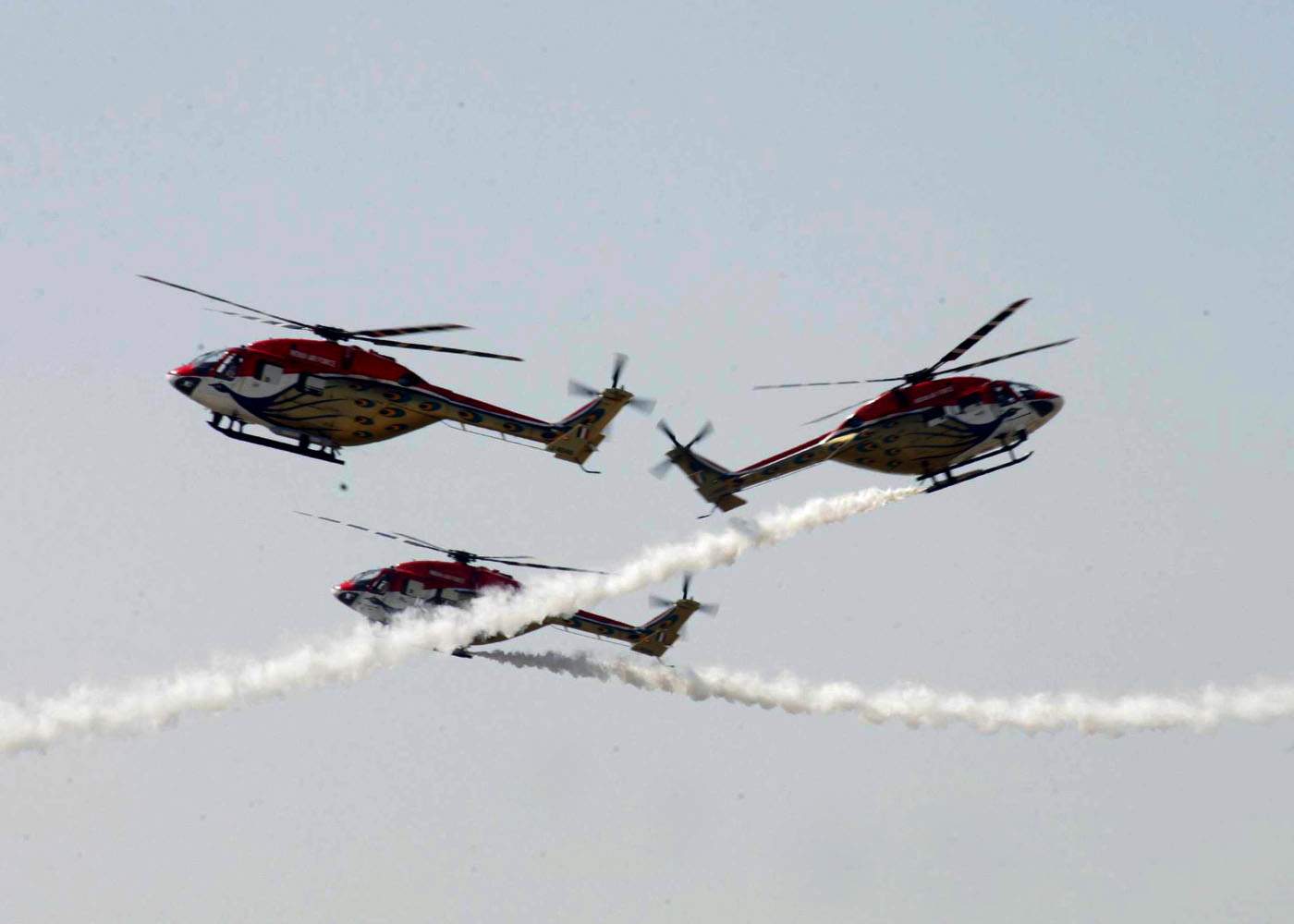

Air Force of 2025
I visualize the Indian Air Force of the year 2025 to be based on our Scientific and Technological Competence in the development of communication satellites, high precision resource mapping satellites, missile systems, unmanned super-sonic aerial vehicles and electronics and communication systems. This capability will enable the Air Force to succeed in the electronically controlled warfare in the midst of space encounters, deep-sea encounters, and ballistic missiles encounters. The winner of future warfare will be the warriors, who can visualize the strength of the enemy, based on the current scientific and technological capabilities and develop suitable strategies for meeting any eventuality. The Indian Air Force by the year 2025 will be a model Air Force for the rest of the world to emulate, endowed with the very best of technology in the world, alert and agile strategic planning capability and above all the most professional and dedicated air warriors.
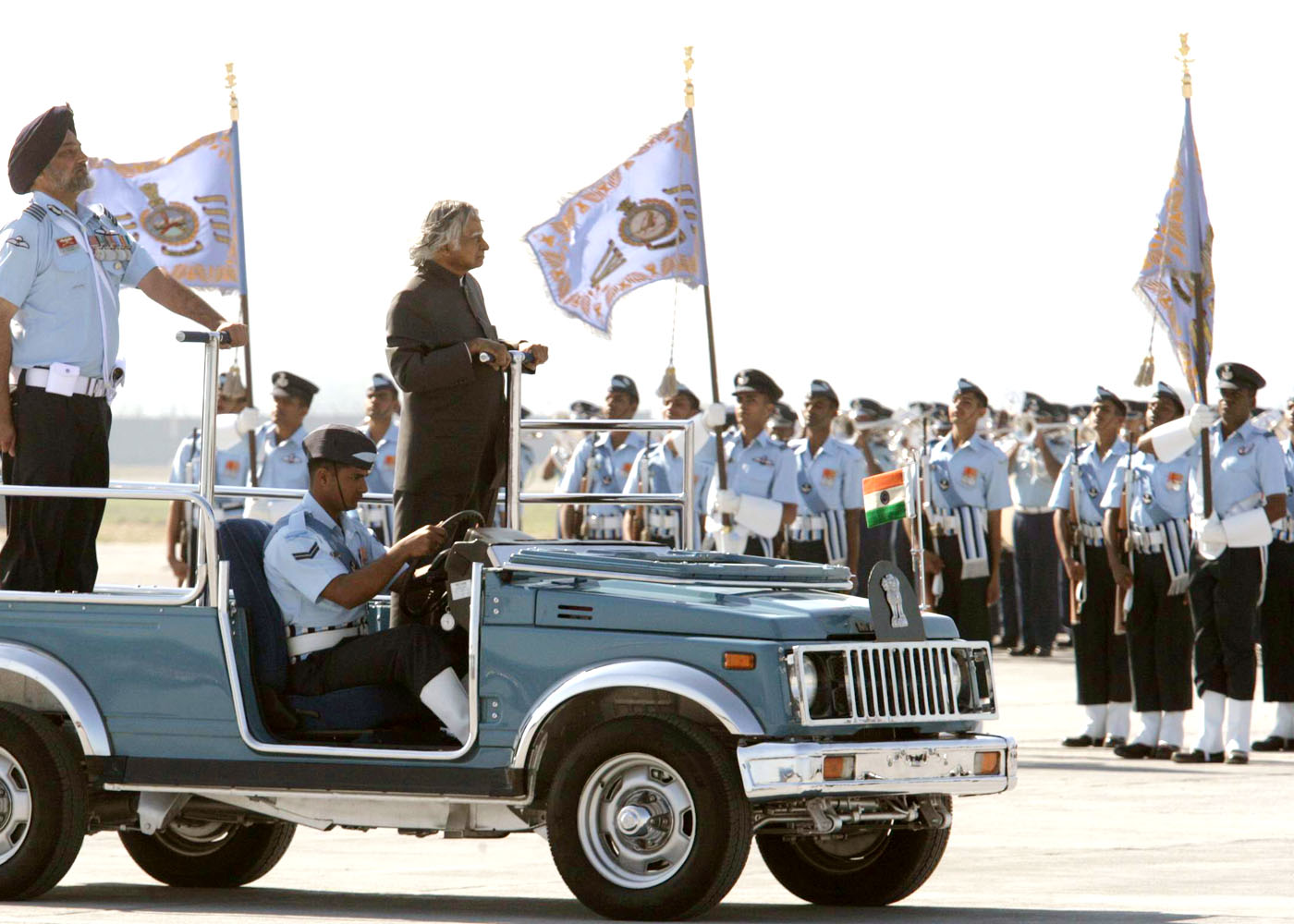

Conclusion
I am confident that Air Warriors will continue the tradition of success and valour in all Air operations. The nation is with you and will lead you to modernize and force multiply all your aerial platforms and ground support systems, so that you will excel in the aerial warfare. I thank you for keeping a vigil with sleepless nights so that our citizens can work peacefully for transforming India into a Developed Nation well before 2020
I realize the 4th Air Force fleet review in progress, is indeed a remarkable event for the nation with the participation of multiple squadrons of the Air Force and all the 41 standards and colors received by the Air Force so far. I congratulate you on your remarkable turnout, bearing and steadfastness in this parade. I wish you success in all your missions.
I extend my greetings to all the members of Air Force and their families during the platinum jubilee celebrations.
May God bless you.
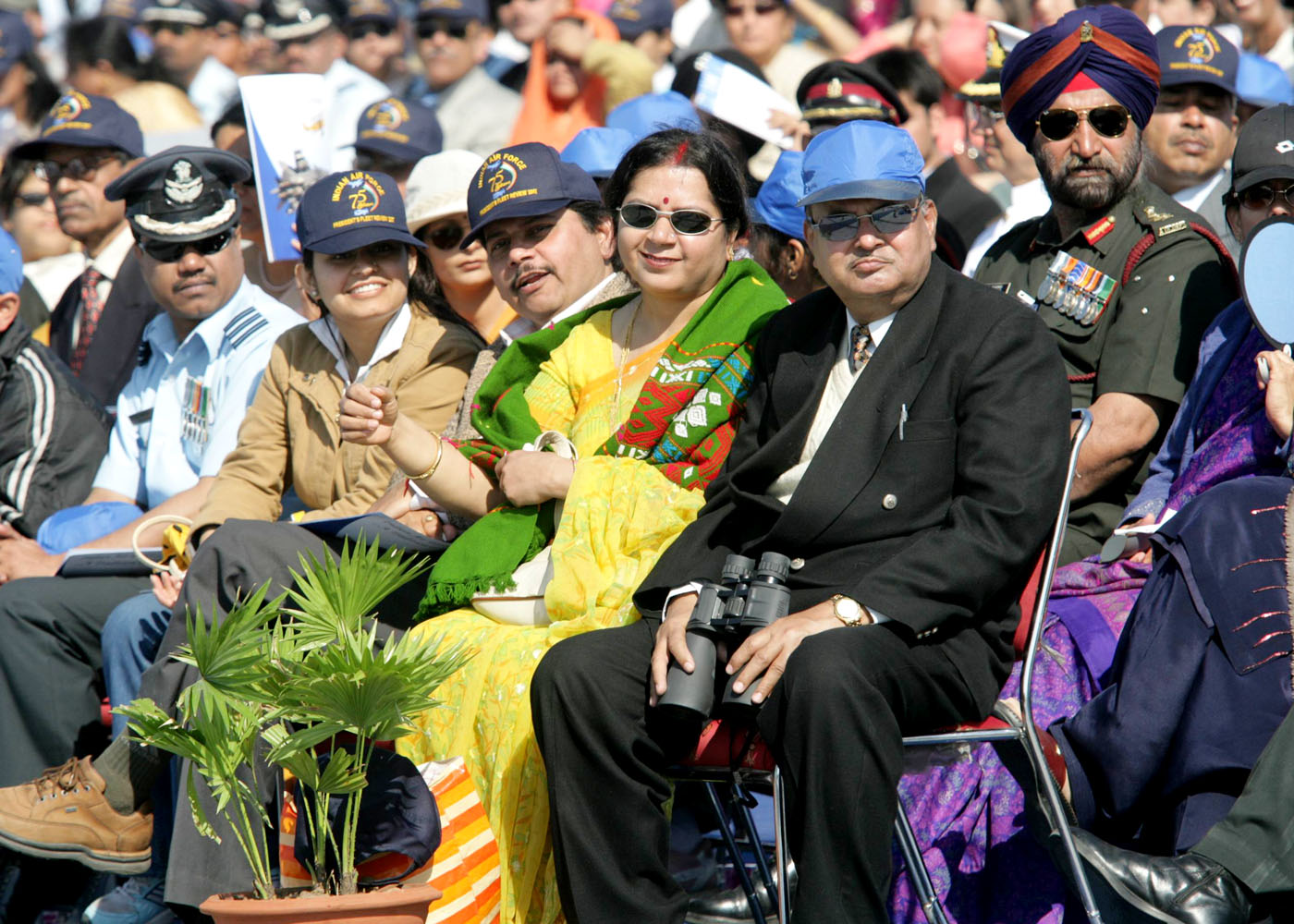
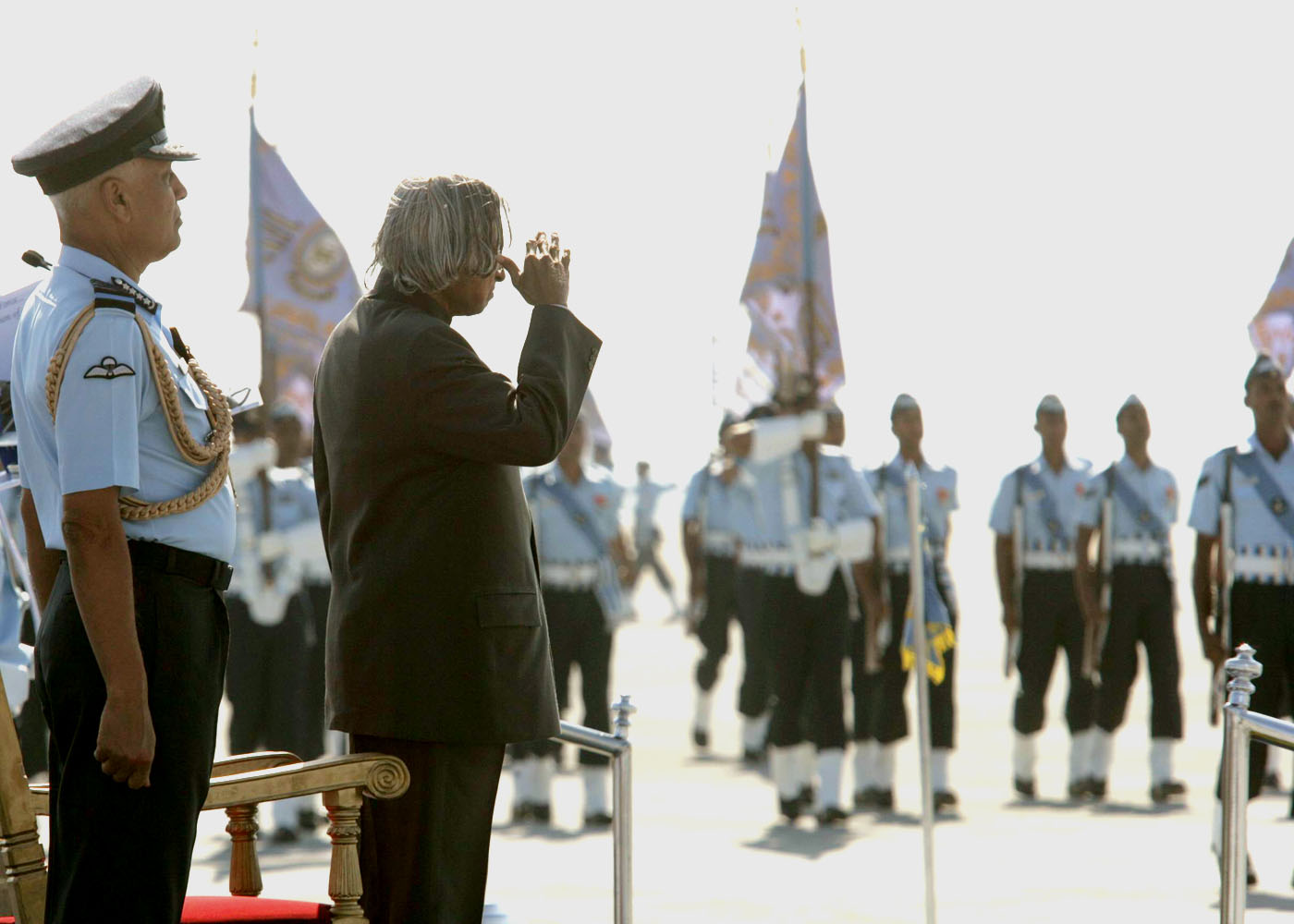
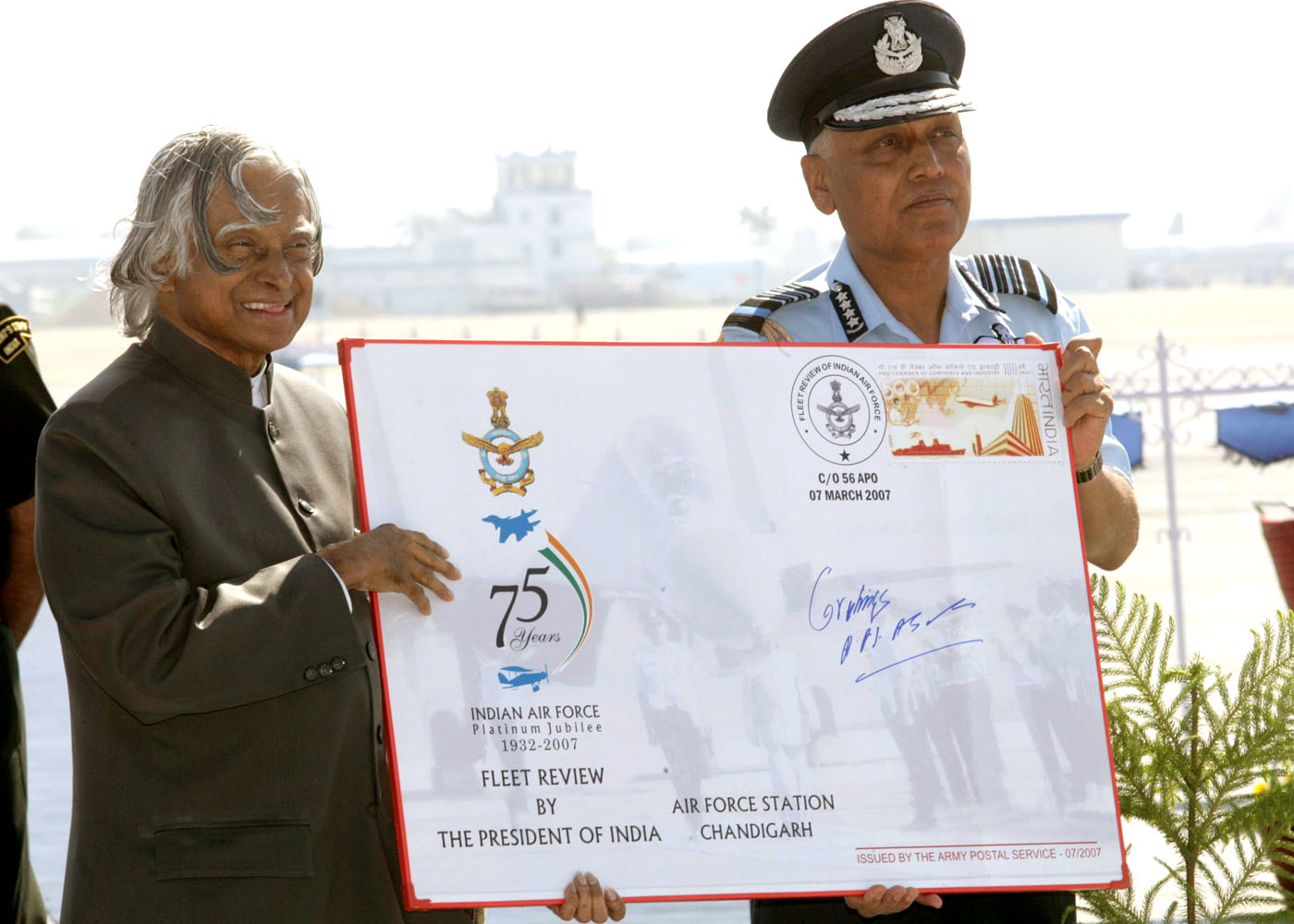
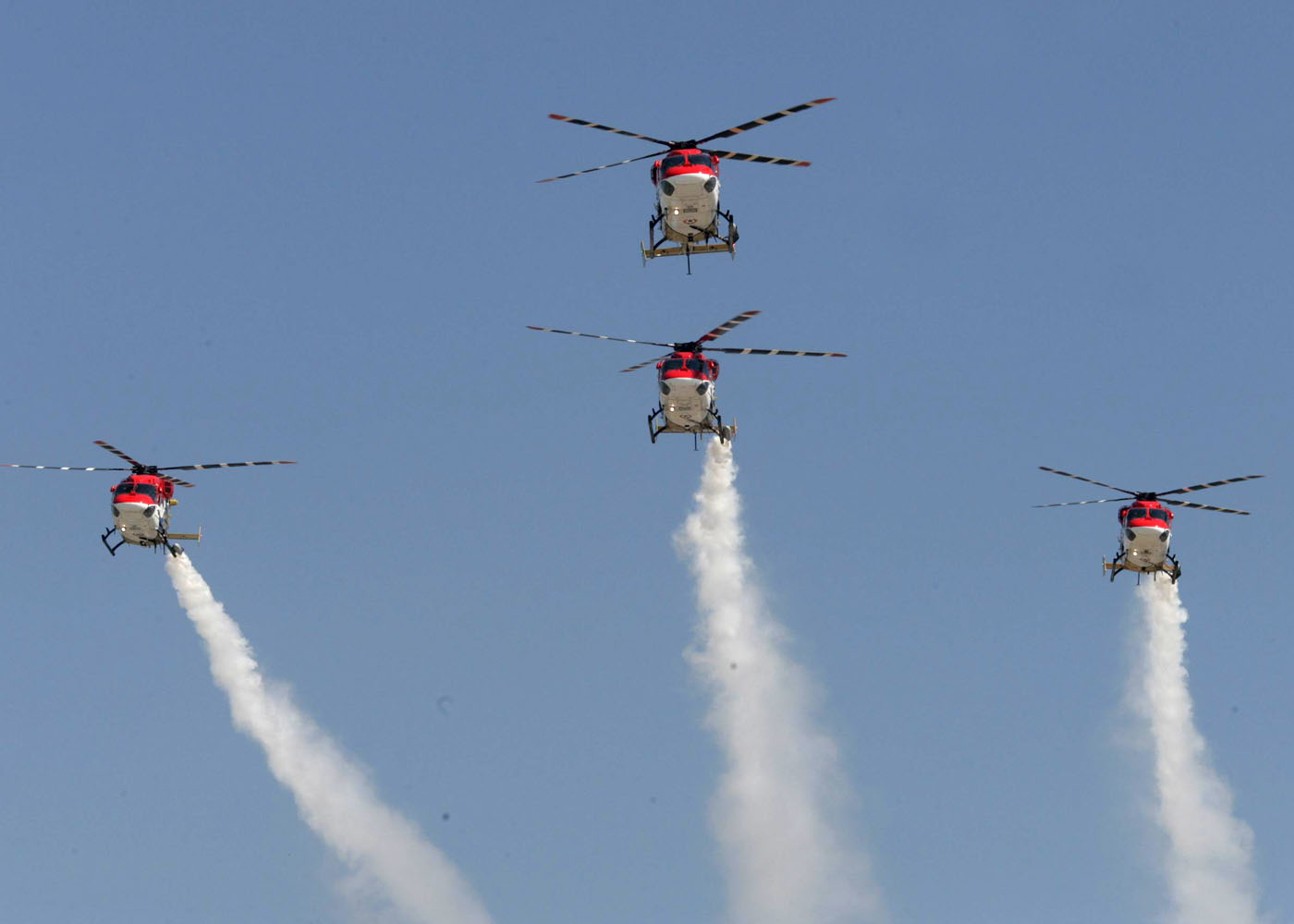
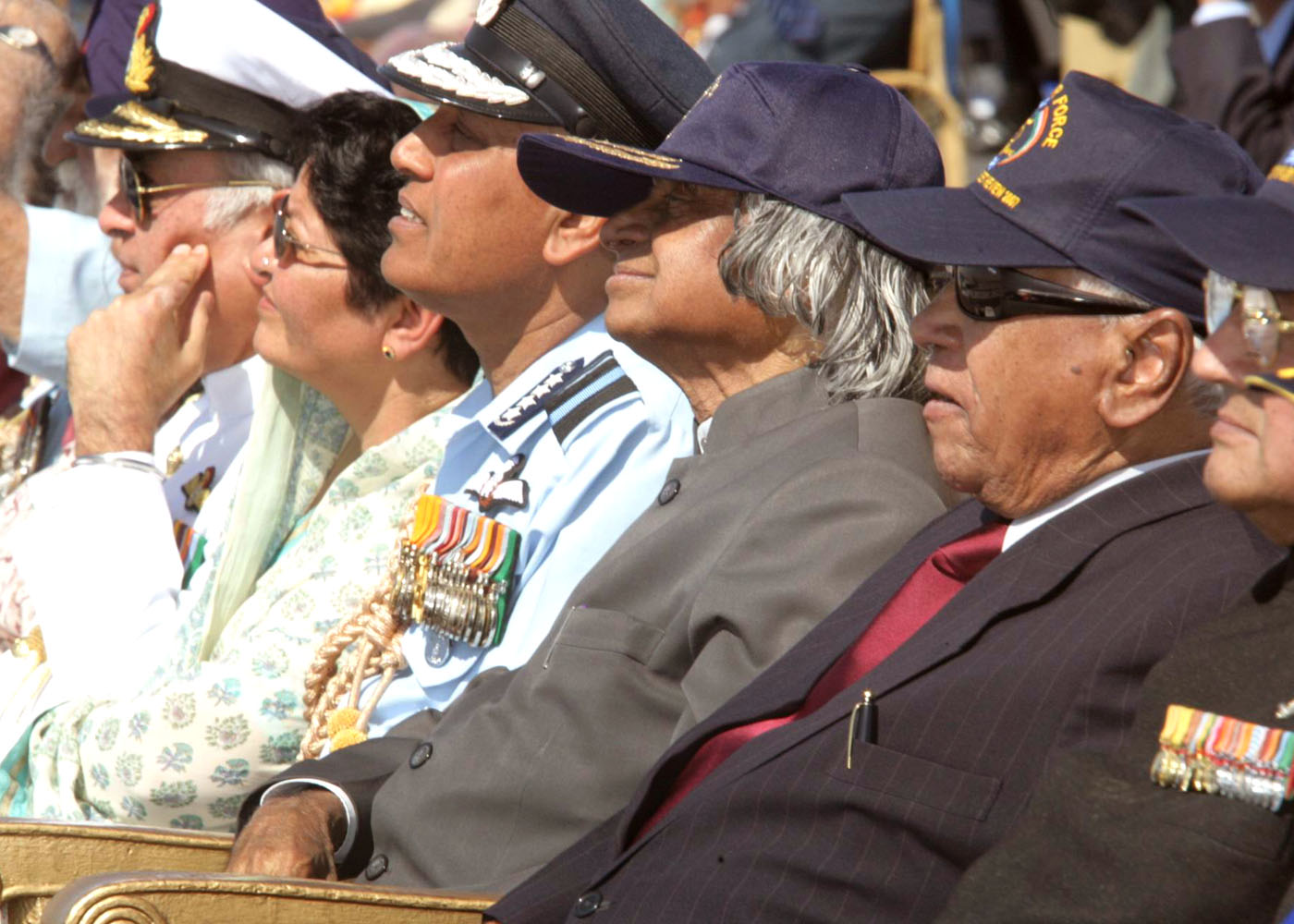
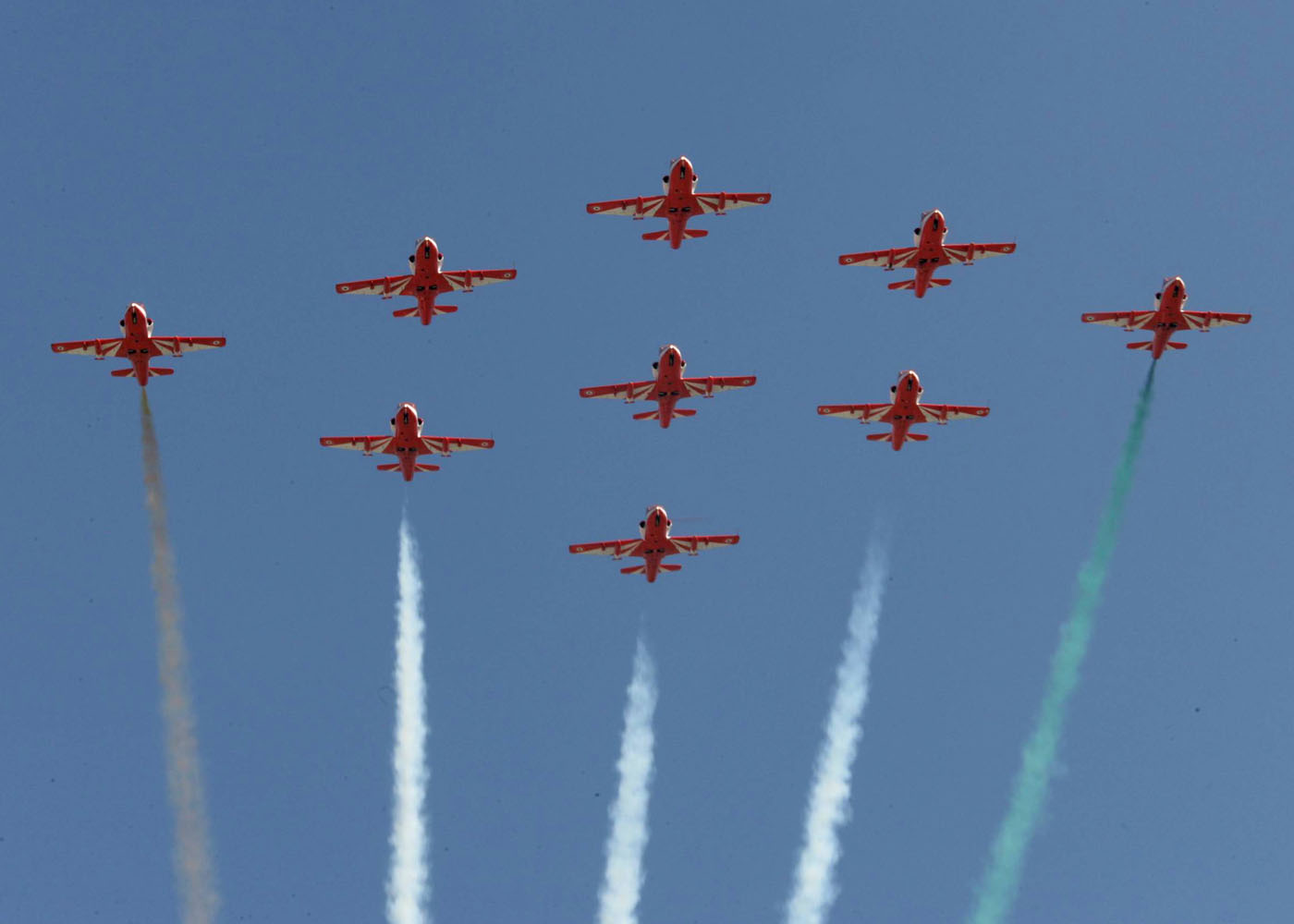
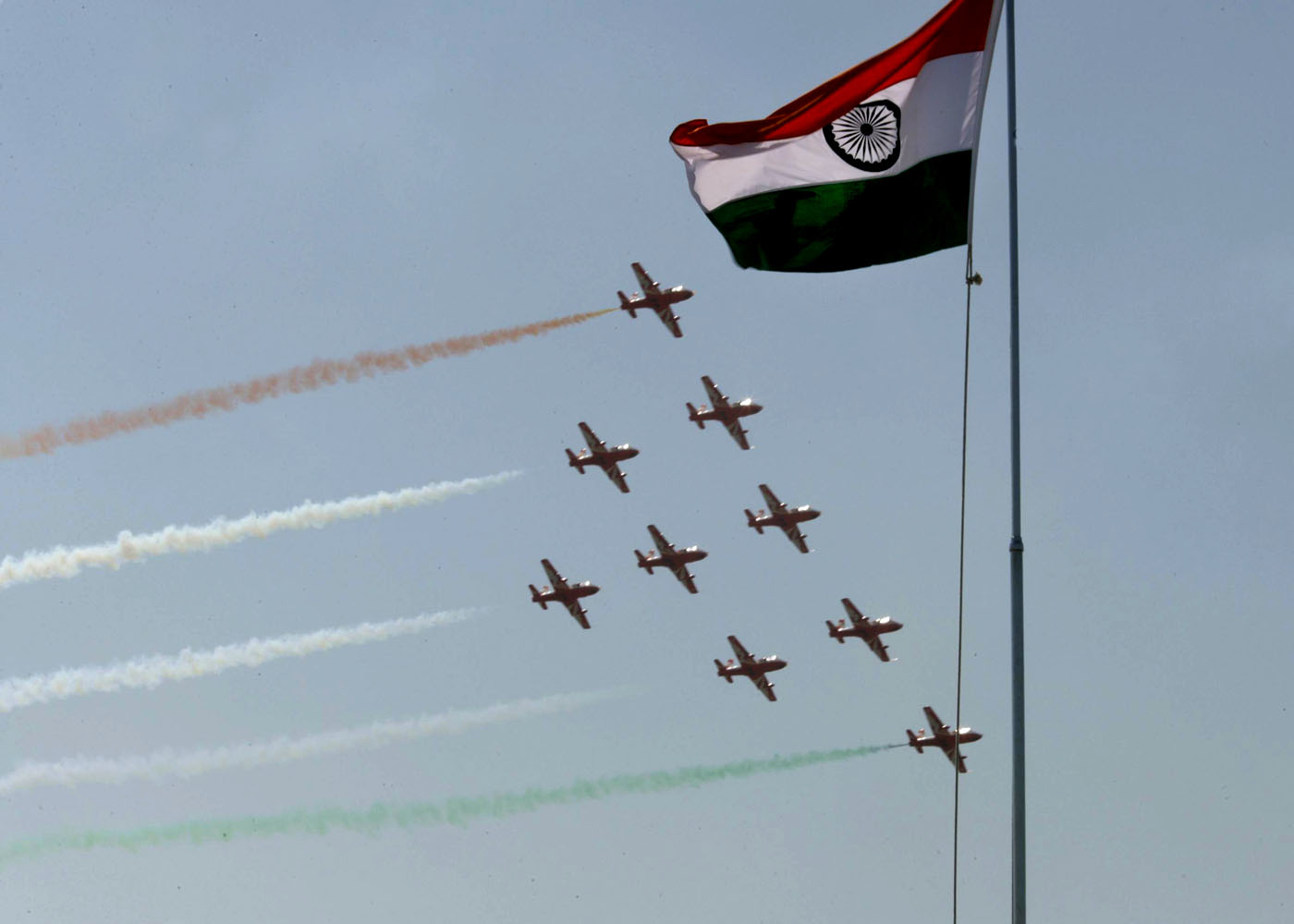
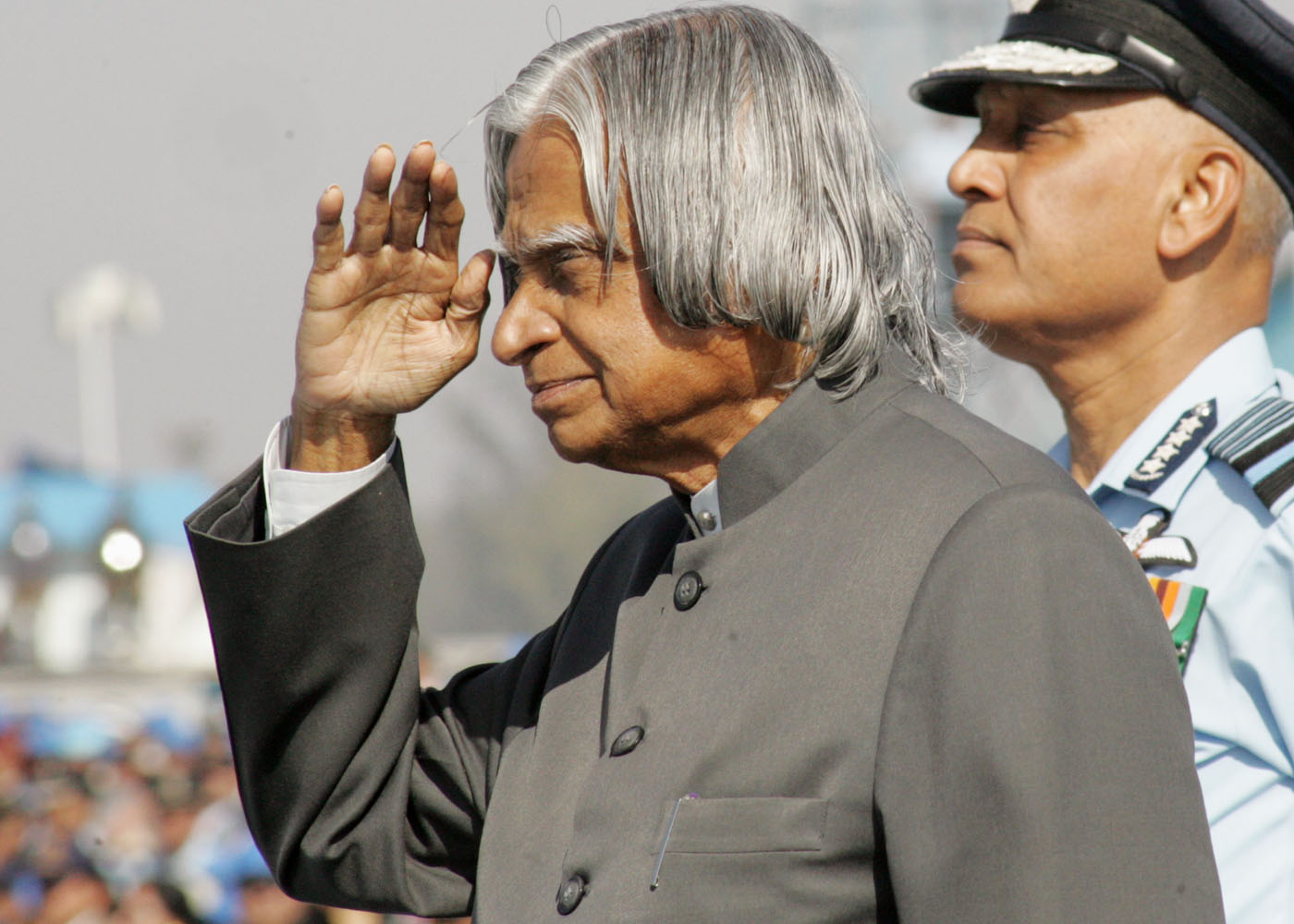
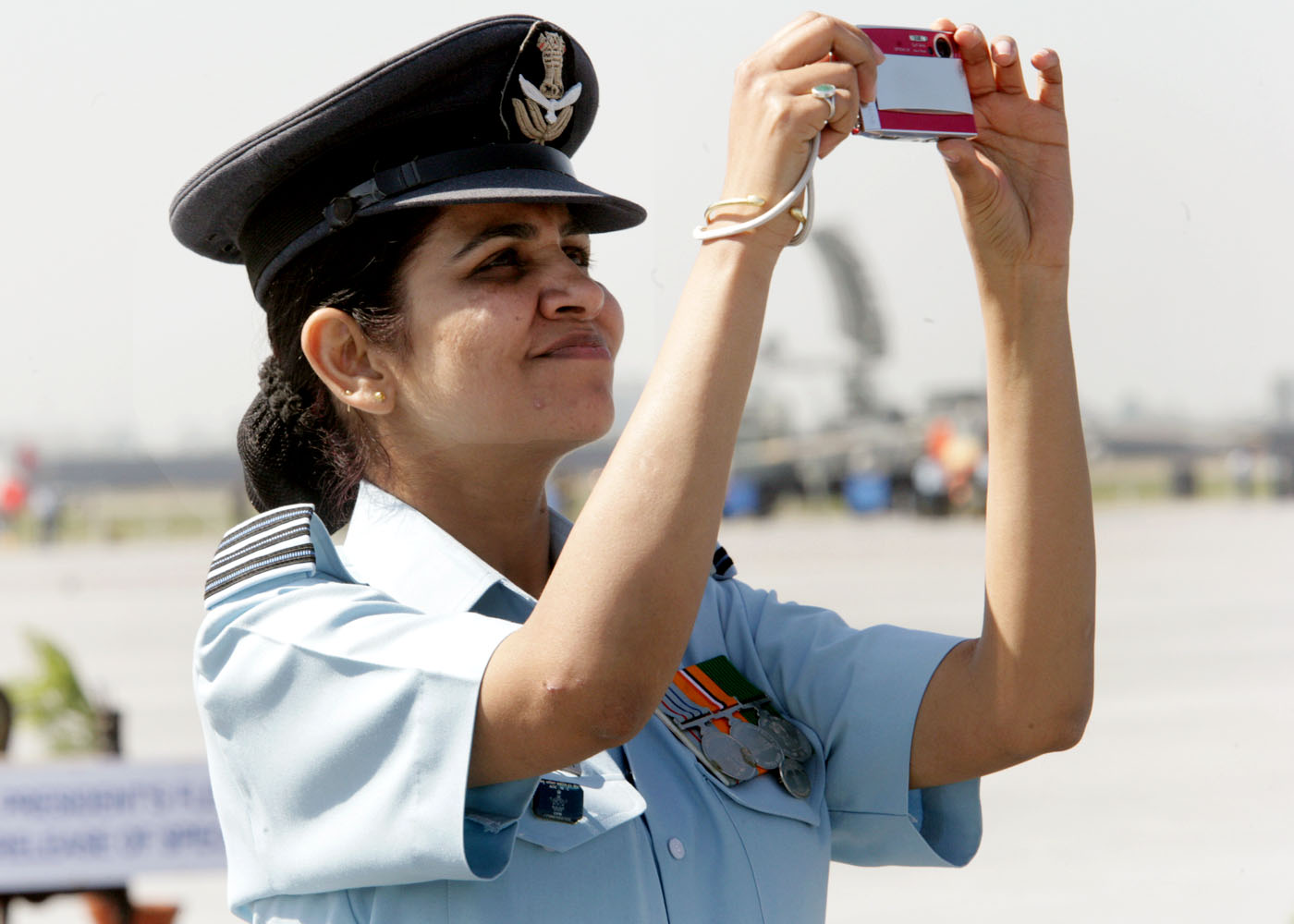
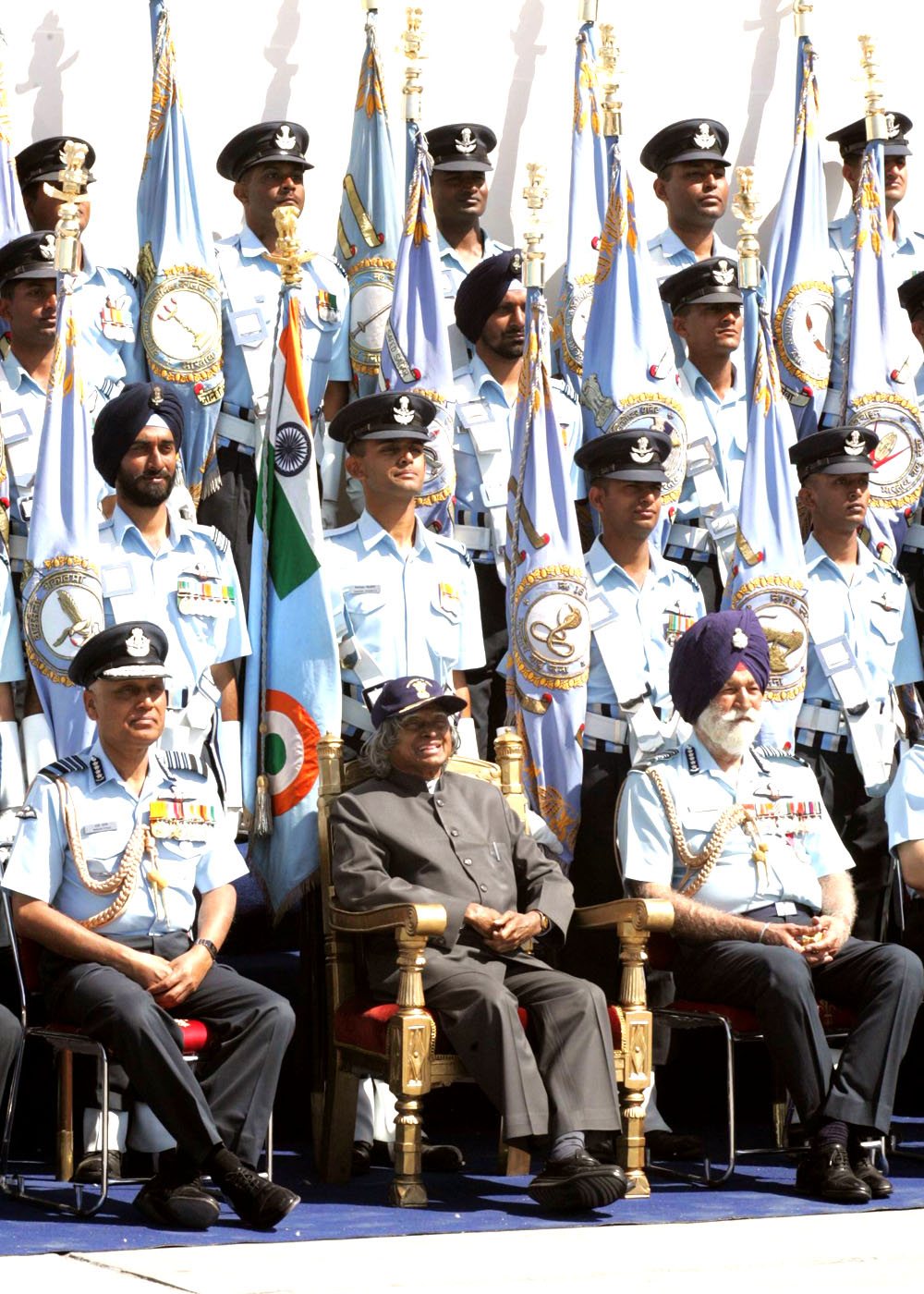
<<Back
|
|